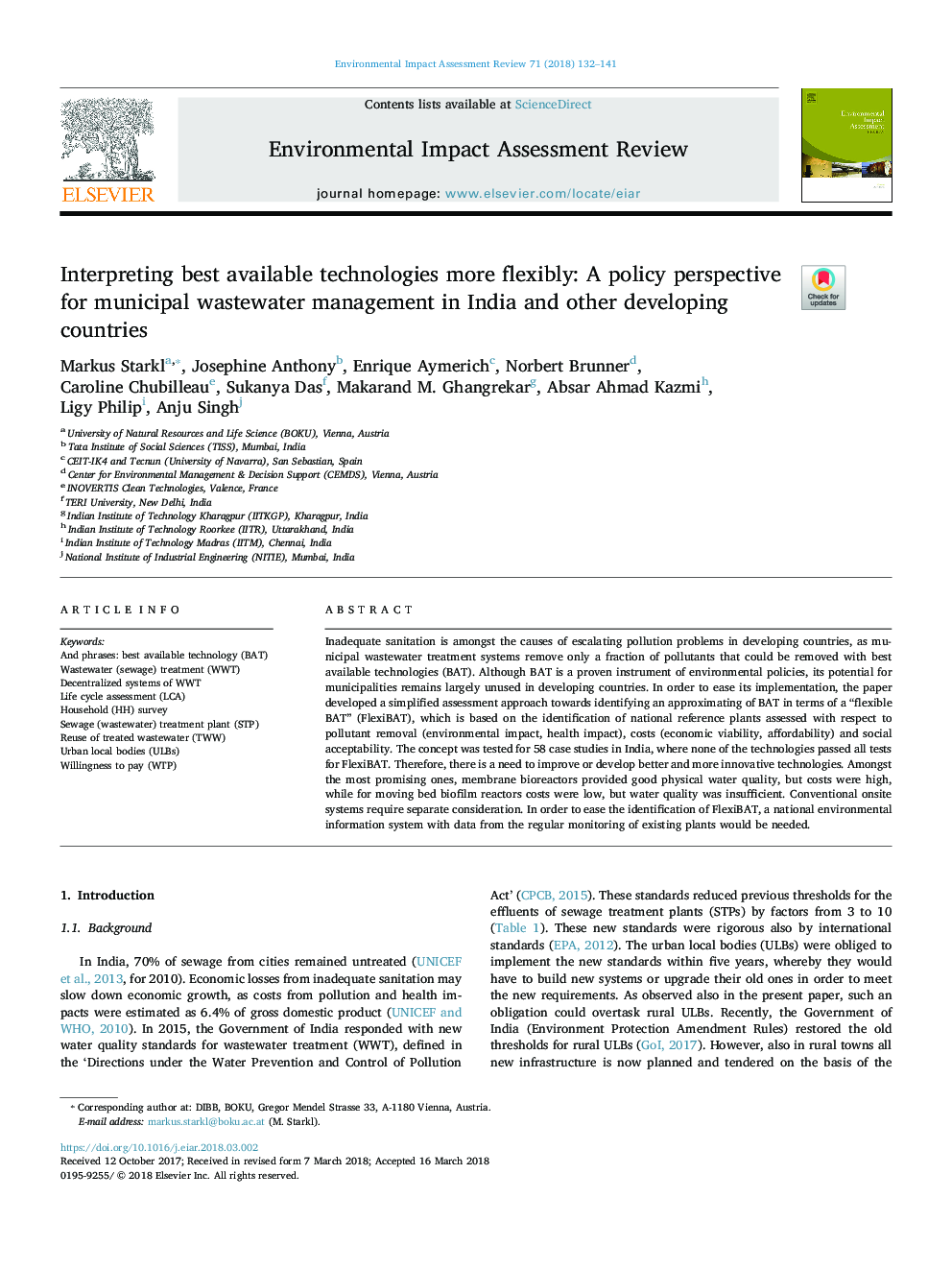| Article ID | Journal | Published Year | Pages | File Type |
|---|---|---|---|---|
| 7464841 | Environmental Impact Assessment Review | 2018 | 10 Pages |
Abstract
Inadequate sanitation is amongst the causes of escalating pollution problems in developing countries, as municipal wastewater treatment systems remove only a fraction of pollutants that could be removed with best available technologies (BAT). Although BAT is a proven instrument of environmental policies, its potential for municipalities remains largely unused in developing countries. In order to ease its implementation, the paper developed a simplified assessment approach towards identifying an approximating of BAT in terms of a “flexible BAT” (FlexiBAT), which is based on the identification of national reference plants assessed with respect to pollutant removal (environmental impact, health impact), costs (economic viability, affordability) and social acceptability. The concept was tested for 58 case studies in India, where none of the technologies passed all tests for FlexiBAT. Therefore, there is a need to improve or develop better and more innovative technologies. Amongst the most promising ones, membrane bioreactors provided good physical water quality, but costs were high, while for moving bed biofilm reactors costs were low, but water quality was insufficient. Conventional onsite systems require separate consideration. In order to ease the identification of FlexiBAT, a national environmental information system with data from the regular monitoring of existing plants would be needed.
Related Topics
Physical Sciences and Engineering
Energy
Renewable Energy, Sustainability and the Environment
Authors
Markus Starkl, Josephine Anthony, Enrique Aymerich, Norbert Brunner, Caroline Chubilleau, Sukanya Das, Makarand M. Ghangrekar, Absar Ahmad Kazmi, Ligy Philip, Anju Singh,
